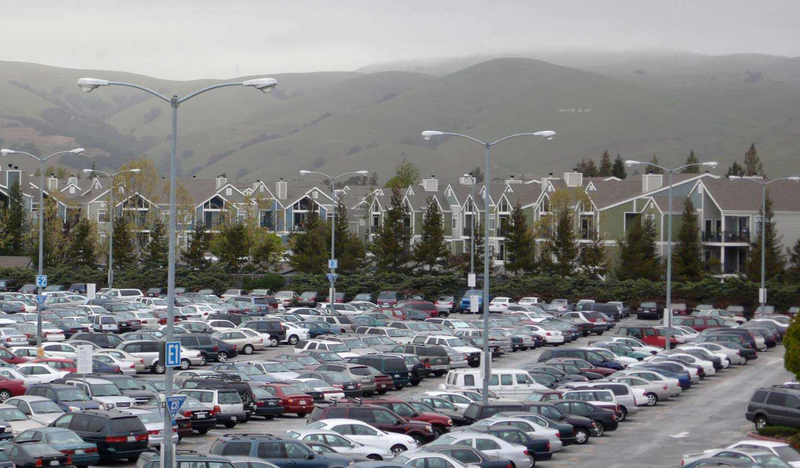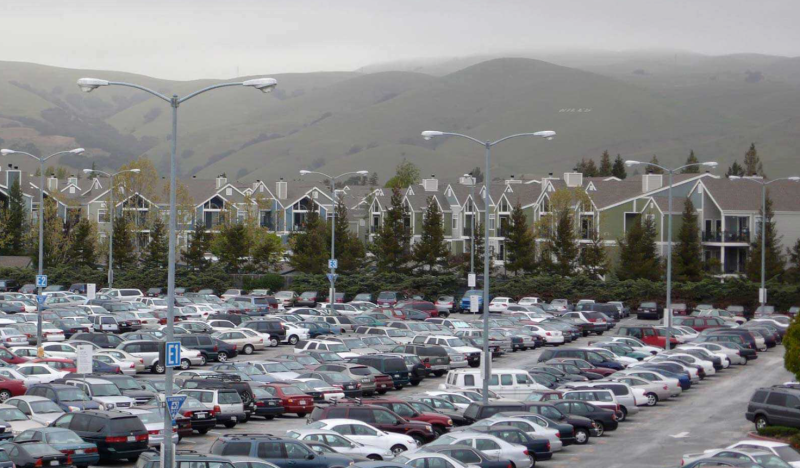
For a minute, try to forget the hype you hear about self-driving cars and think about the single-occupant, human-driven vehicle like this: A very inefficient way to use expensive city land. Not only do extra-wide roads take up a lot of space, there’s far too much property allocated to parking—about 20 percent of the land in many US downtowns are surface parking lots. Autonomous vehicles will require less than a third of the land that cars do now, which could then be used for anything but cars. Like more housing.
This is why San Francisco—a city that, geographically, has very little land—is not just planning on autonomous vehicles as a transportation solution. Done right, self-driving cars can also alleviate the city’s affordable housing crisis. “It’s a space issue,” said Tim Papandreou, chief innovation officer for San Francisco’s Municipal Transportation Agency (SFMTA), who recently spearheaded the city’s big proposal. “We have the data to prove we won’t need the space on the streets anymore. But if we do both shared and electric automated vehicles, we’re not just freeing up space in the street, we’re freeing up space in the lots.”
San Francisco’s vision is one of the seven finalists for the Smart City Challenge, the US Department of Transportation-sponsored contest to turn one American city into a transportation utopia. As one of the finalists, San Francisco received $100,000 to refine its proposal, and could get up to $50 million more for implementation when the winning Smart City is announced this summer.
Advertisement
But what San Francisco’s proposal also does is draw a very clear roadmap—and it is an actual road map—for how other cities can use this kind of technology to avoid their own catastrophic housing crises.
These before-and-after graphics from the presentation show a surprisingly obvious correlation between transportation and affordability in a city with limited space like San Francisco. Right now, San Francisco’s lowest-income residents are being priced out of the city due to a failure to add enough housing stock. Many people end up living further away, where public transit isn’t as good, and spending way too much on private transportation, which ends up creating a dirtier, more dangerous city.
Sponsored
Just moving 10 percent of San Francisco’s residents out of single-occupancy cars and into shared vehicles, public transit, or “active modes” like walking and biking would not only alleviate those mobility costs for families, but would also reduce emissions and prevent deaths on the street. Instead of building parking for all those cars, the city can build housing. People can afford to live closer to their jobs again, and there will actually be places for them to live.
This is not a challenge that’s unique to San Francisco, said Papandreou. But San Francisco is unique in the sense that its growth has routinely been fought by NIMBYs who don’t want the city to add density—mostly in the form of taller buildings. The secret of the plan, said Papandreou, is that it wouldn’t add much density to the city at all in the form of high-rises. It would really just be converting surface parking lots and parking garages into all sorts of things that make cities more livable.
I’ve collected a few nice visualizations that show the future land-use benefits from autonomous vehicles. But this timeline of how San Francisco plans to get from here to there beautifully illustrates the process for how that change might occur. The city can literally swap parking lots for parks.
What’s most important to note is that this isn’t just a “self-driving car solution,” but rather a movement towards fewer cars, with a full technological overhaul of all the vehicles in the city. Because it’s not just personal cars that are taking up so much space, but also city vehicles like street sweepers, garbage trucks, and delivery vans. “Notice that I always say ‘automated technology,’” said Papandreou. “The future is not going to be happening in the cars of today.” So San Francisco is looking at how to apply this kind of thinking throughout all types of mobility—and beyond wheeled vehicles, like automated drones.
Advertisement
The conversation around autonomous vehicles has become a distraction from a lot of the important conversations that cities need to be having about their futures right now. People are worried about autonomous vehicles adding more cars to streets, and Papandreou said the city could easily introduce some kind of congestion pricing to discourage this. But his argument is that by staying laser-focused on adding residential density, and improving transit options, and making communities walkable, the problem takes care of itself. “We have to increase housing supply,” said Papandreou. “And if we increase housing supply, you don’t need cars at all.”













